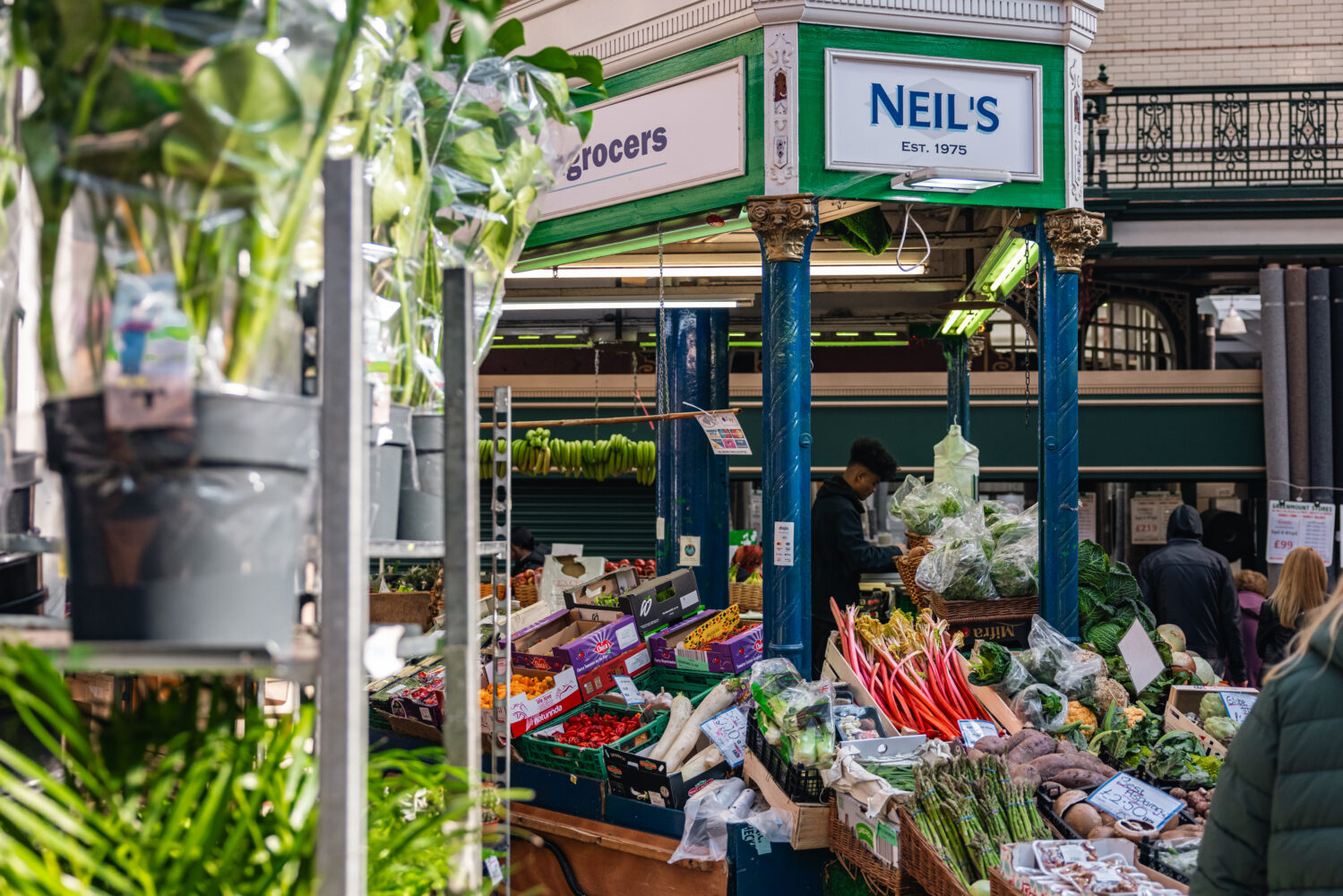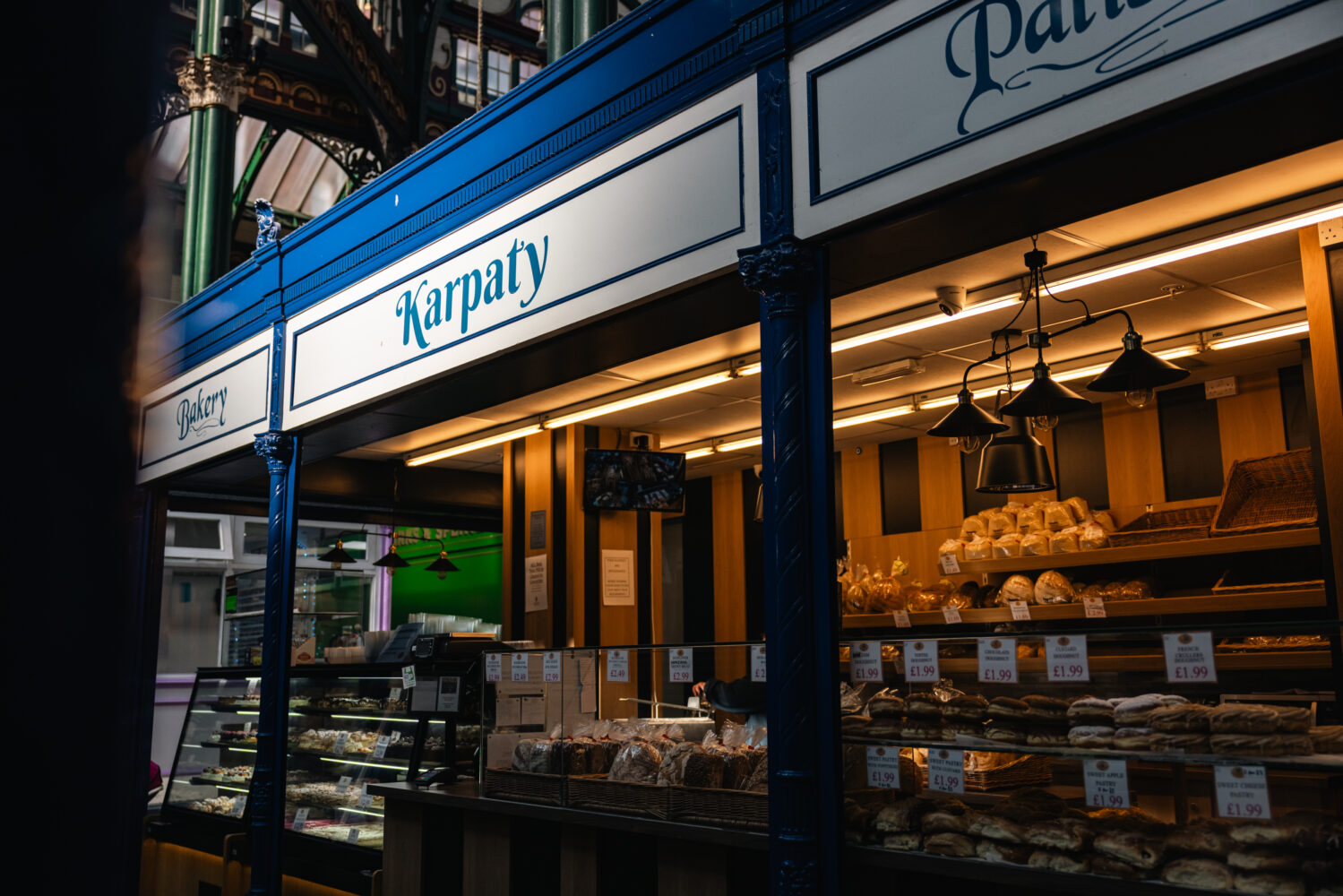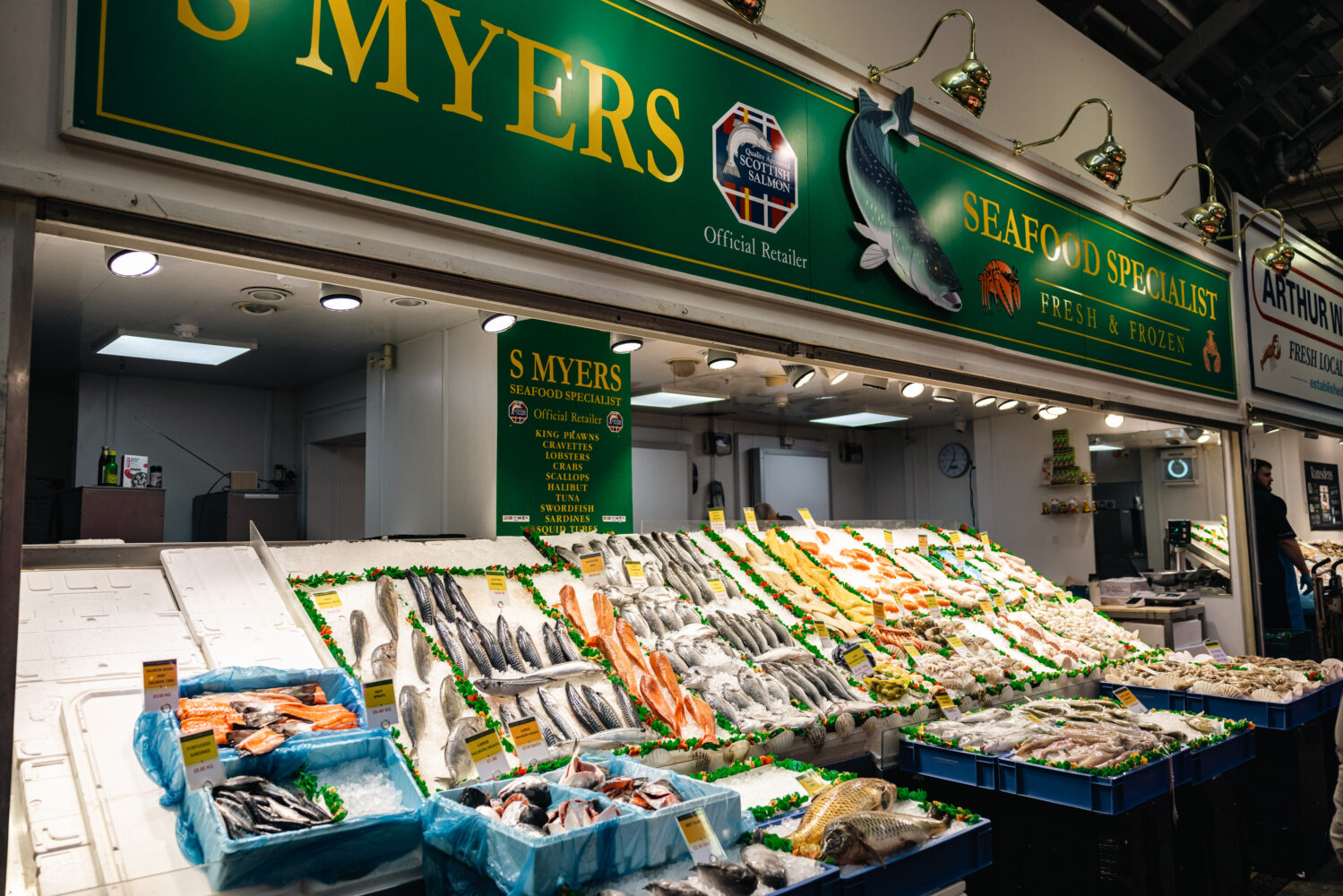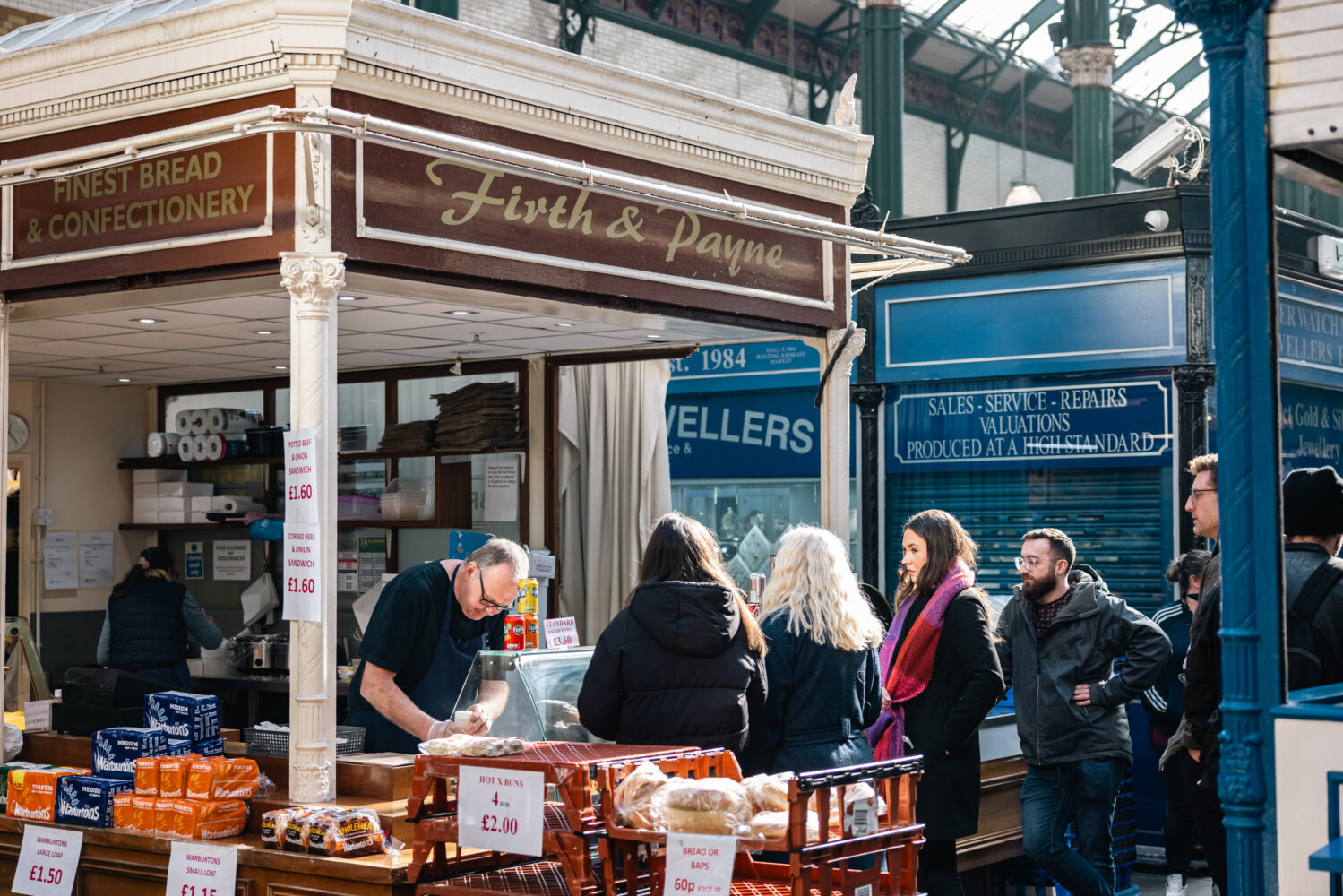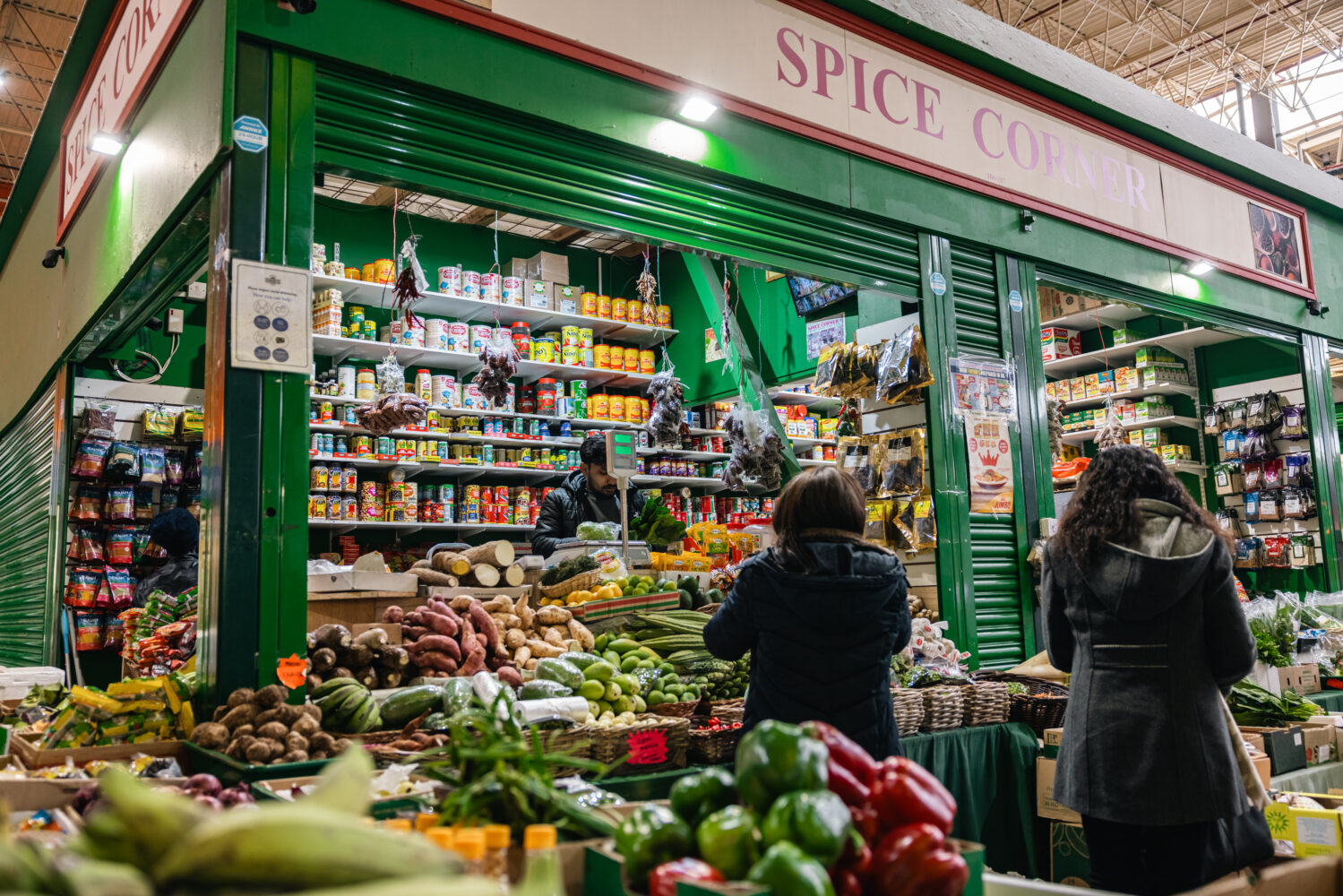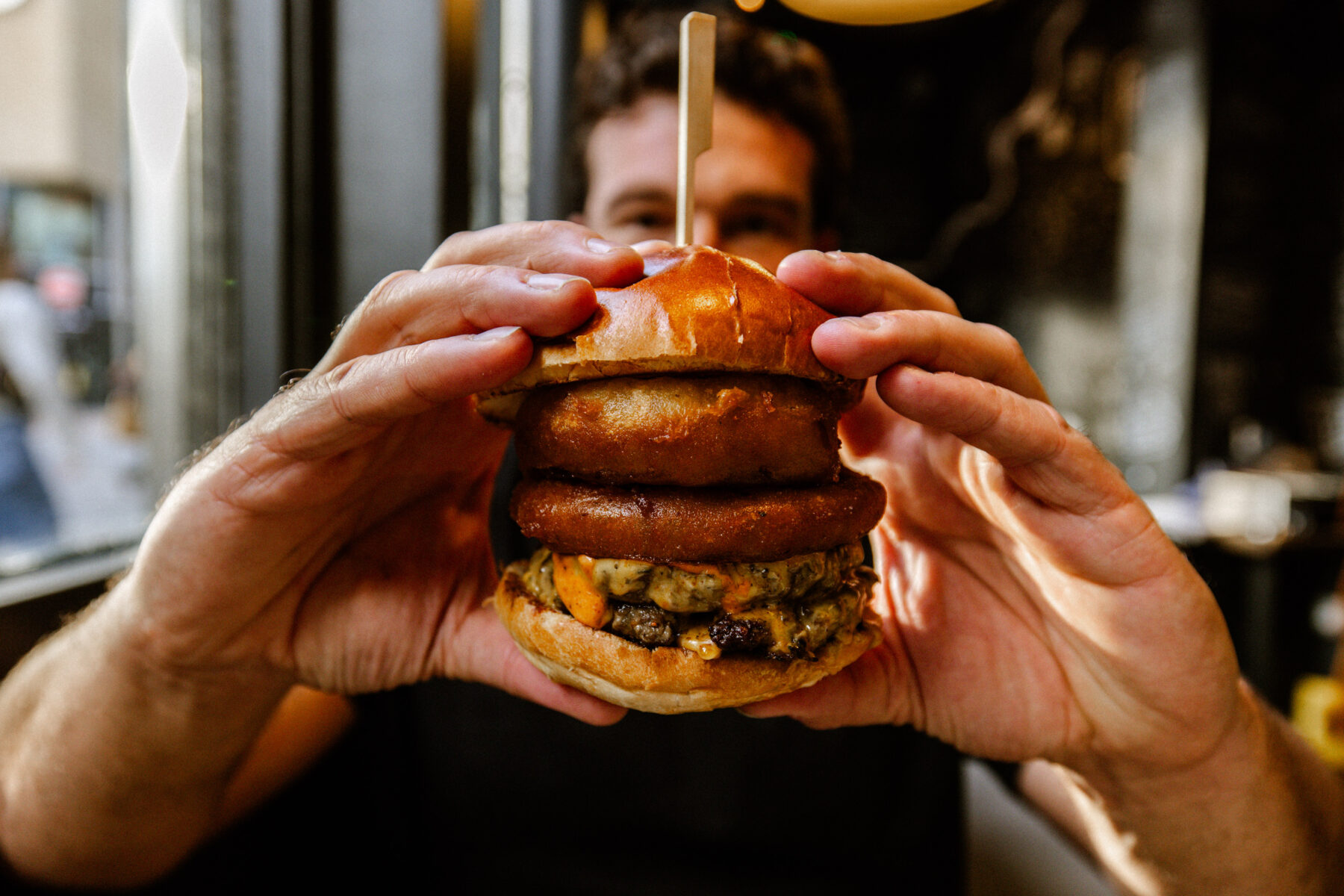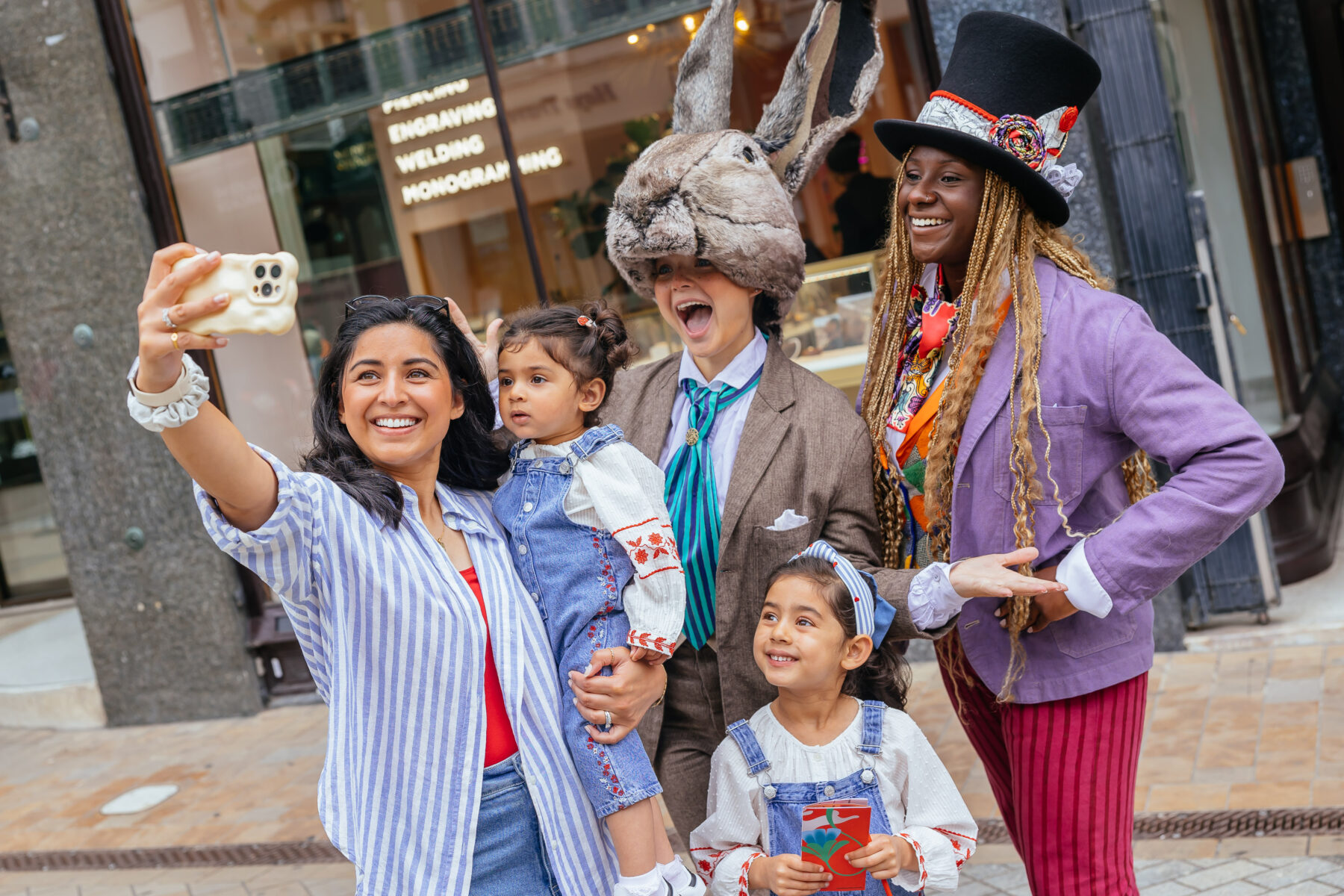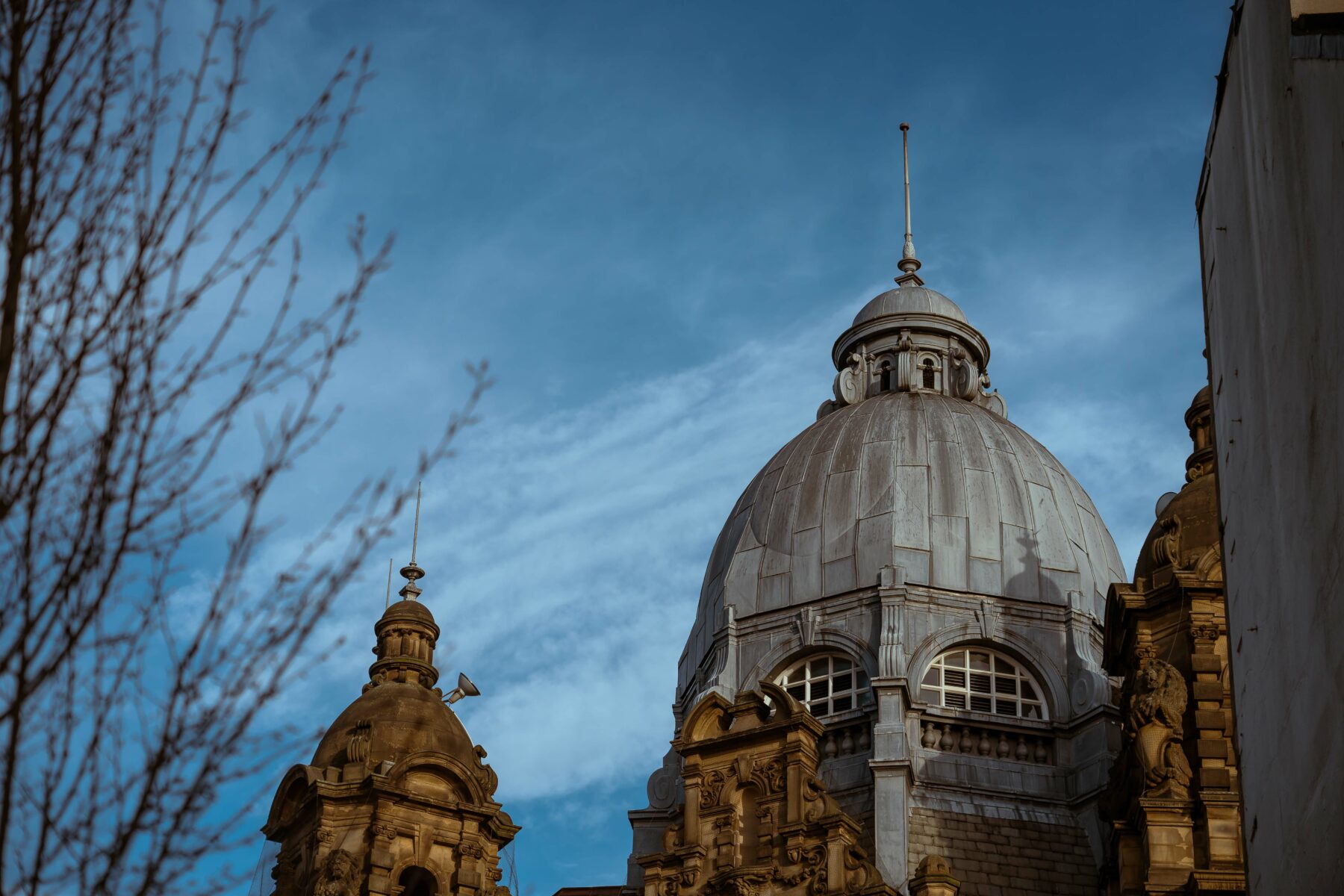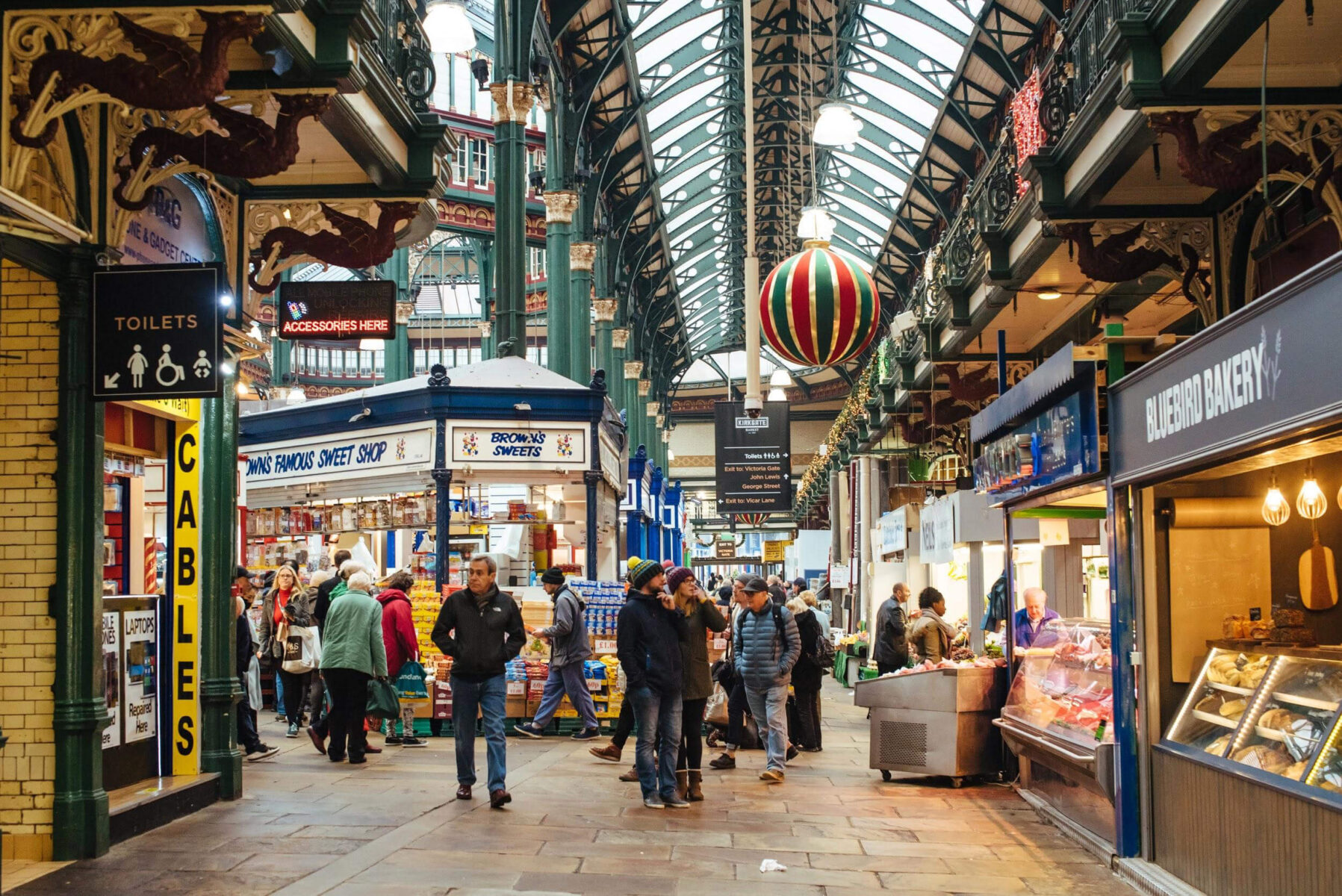
Article
The Rise of Kirkgate Market
Chapter 81
Kirkgate Market is a true Leeds story of innovation, ambition, disaster and tenacity. The largest covered market in Europe, Kirkgate currently hosts 245 businesses across the indoor and outdoor markets, and averages about 138,000 visitors per week.
The fortunes of both the buildings and the livelihoods dependent on the halls within have gone up and down over time, but Kirkgate has exhibited its power to endure and indeed improve, through almost two hundred years of history.
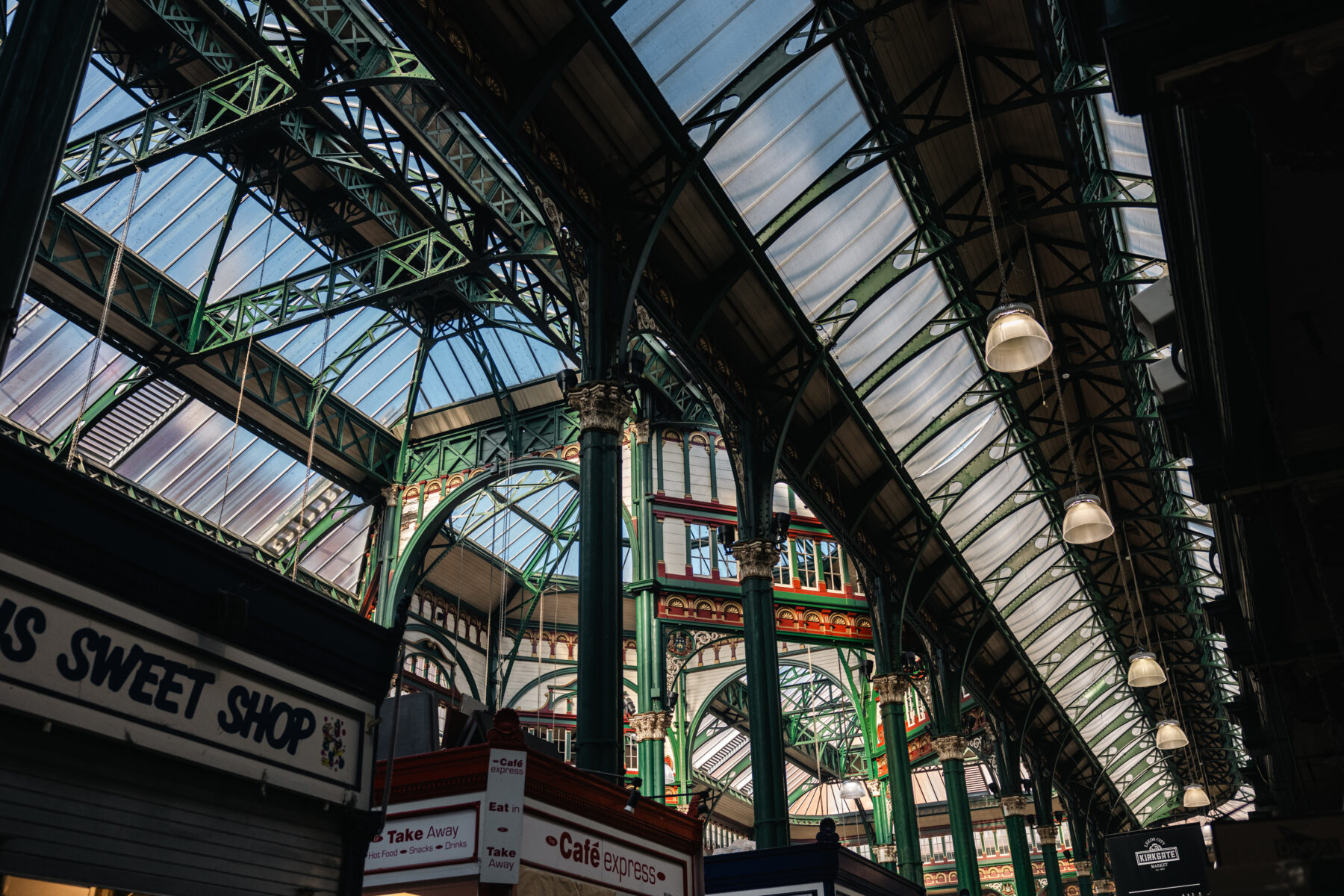 Kirkgate Market 2024
Kirkgate Market 2024
History
Kirkgate Market has been on this site in its current form for 120 years, but the first, open-air markets opened here in 1822. This area had buzzed with the life of the White Cloth Halls and Corn Exchange, but construction didn’t begin on Kirkgate market itself until 1857. Unveiled in 1850, the plans for the first market were based on Joseph Paxton’s iconic Crystal Palace in London. The development expanded south- and eastwards in 1875.
The central market hall ran alongside Duncan Street and was surrounded on three sides by shops predominantly rented to butchers and fishmongers. Inside, sellers focussed on fruit, veg and dairy produce. The south market hall meanwhile, bordering Hunslet Lane and Meadow Lane, was used by butchers and various miscellaneous shops and stalls, as well as 18 homes and nine slaughterhouses.
Leeds was granted city status in 1893, and the area boomed with commerce and retail from the textile industry. This new designation increased popular desire for grand, civic buildings befitting this new ‘city’. The area around the ever-popular market needed some gentrification, surrounded as it was by abattoirs and slums – so a design competition was held to create a grand new entrance way and hall to the front of the market, which was won (amongst mutterings of corruption) by Joseph & John Leeming of London.
The market truly pushed contemporary boundaries, not only in its architecture, but in its engineering too. An innovative cooled area was created to keep fishmonger’s stalls fresh in 1895. It wasn’t until 1904 that the ornate hall was built (and stallholders revolted at its last-minute closure).
M&S
National favourite Marks & Spencer originated here in Kirkgate’s hallowed halls back in 1884, as a ‘penny bazaar’. Lithuanian Michael Marks set up the stall with the slogan “Don’t ask the price, it’s a penny”, and the concept was massively popular. Tom Spencer came onboard as a partner later, and together the business-savvy pair founded Marks & Spencer.
Unveiled in 1984, 100 years after the beginnings of this still-popular British institution, the Centenary Clock in the 1904 Hall marks Kirkgate’s connection to M&S. In 2012, the chain looked back to its humble beginnings by opening a stall alongside the Centenary Clock.
60,000 historic M&S artefacts have been safeguarded and protected, and in 2009 they were moved from London to the University of Leeds’ Parkinson Building.
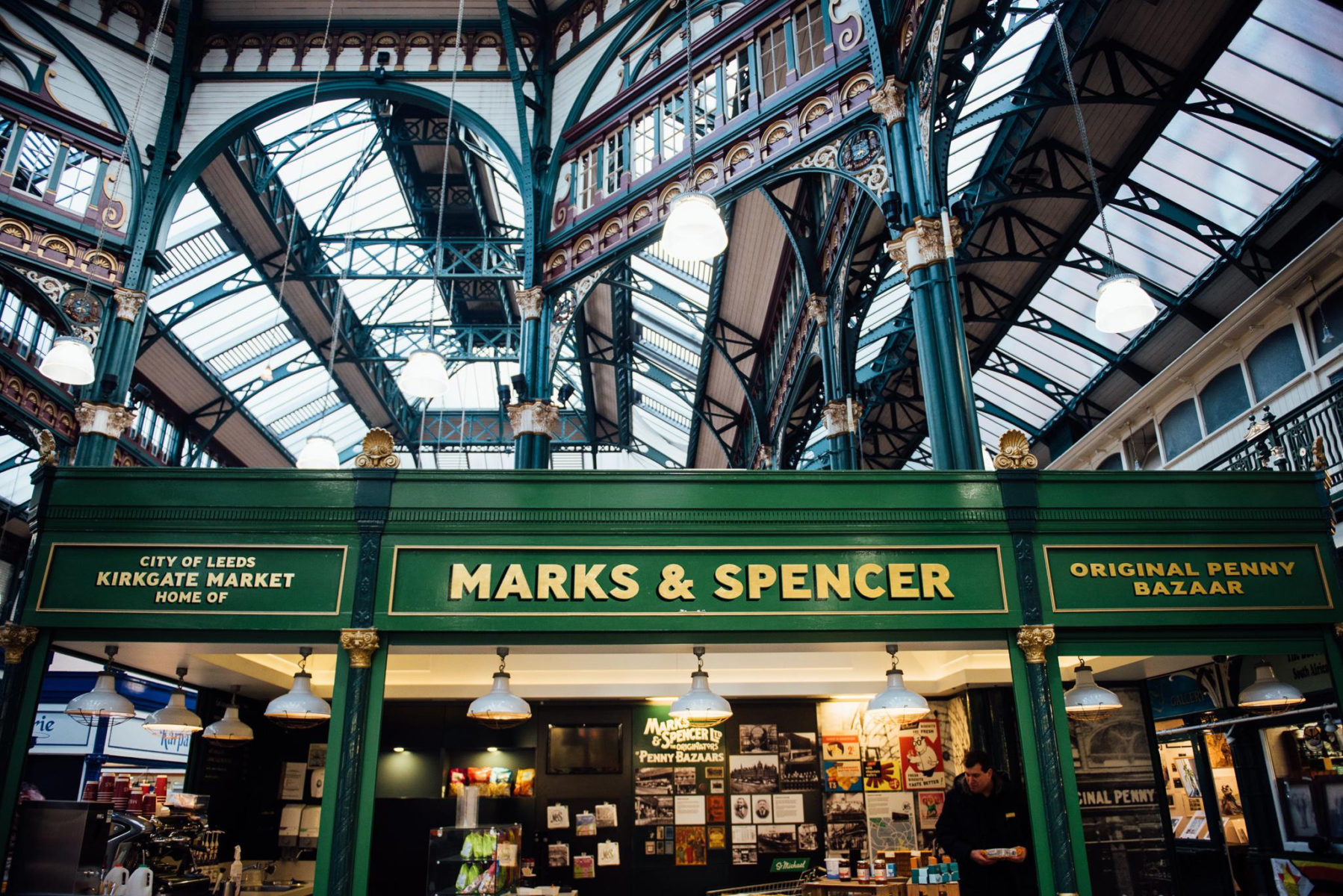 Marks & Spencer originated in Kirkgate Market back in 1884
Marks & Spencer originated in Kirkgate Market back in 1884
Trials, Tribulations and Triumphs
The market had become absolutely fundamental to the city. The market continued to trade hrough the peak of WWII bombings. And air raid shelters were built onsite to provide for the safety of traders. The Ministry of Food (to which Jamie Oliver’s current day market institution owes its name) also operated from offices in the market, implementing wartime rationing.
After the war, an open market, car parking and new warehouses were built, whilst some older structures were demolished or refurbished. An astounding 100,000 shoppers would enter the market’s hallowed halls to patronise more than 400 traders, every Saturday, during the 1950s.
It took rampaging flames decades later in December 1975 to shut the market down. Although fire tore through two-thirds of the market as shoppers went about their festive preparations, no lives were lost and brave traders reopened the (undamaged) 1904 Hall only three days later.
In 1976 and 1981 new halls were opened, and in 1986 building proposals were submitted – and abandoned. The market was in need of development, and work commenced in 1991. This refurbishment elevated Kirkgate’s status from a Grade II to a Grade I listed building.
The 1990s brought further renovation, including redevelopment of the outdoor market and the provision of a new central square. But the rising popularity of supermarkets meant that the once-thriving market was becoming less popular and less well-visited as the millennium struck. In 2013, Leeds City Council invested £12 million in ambitious renovations, including recovering the roofs of the 1976 and 1981 buildings and creating a cutting-edge events space and hall where shoppers can relax and take advantage of street food vendors and live music performances. Although controversial upon opening, the popularity and footfall of the market is once again on the up.
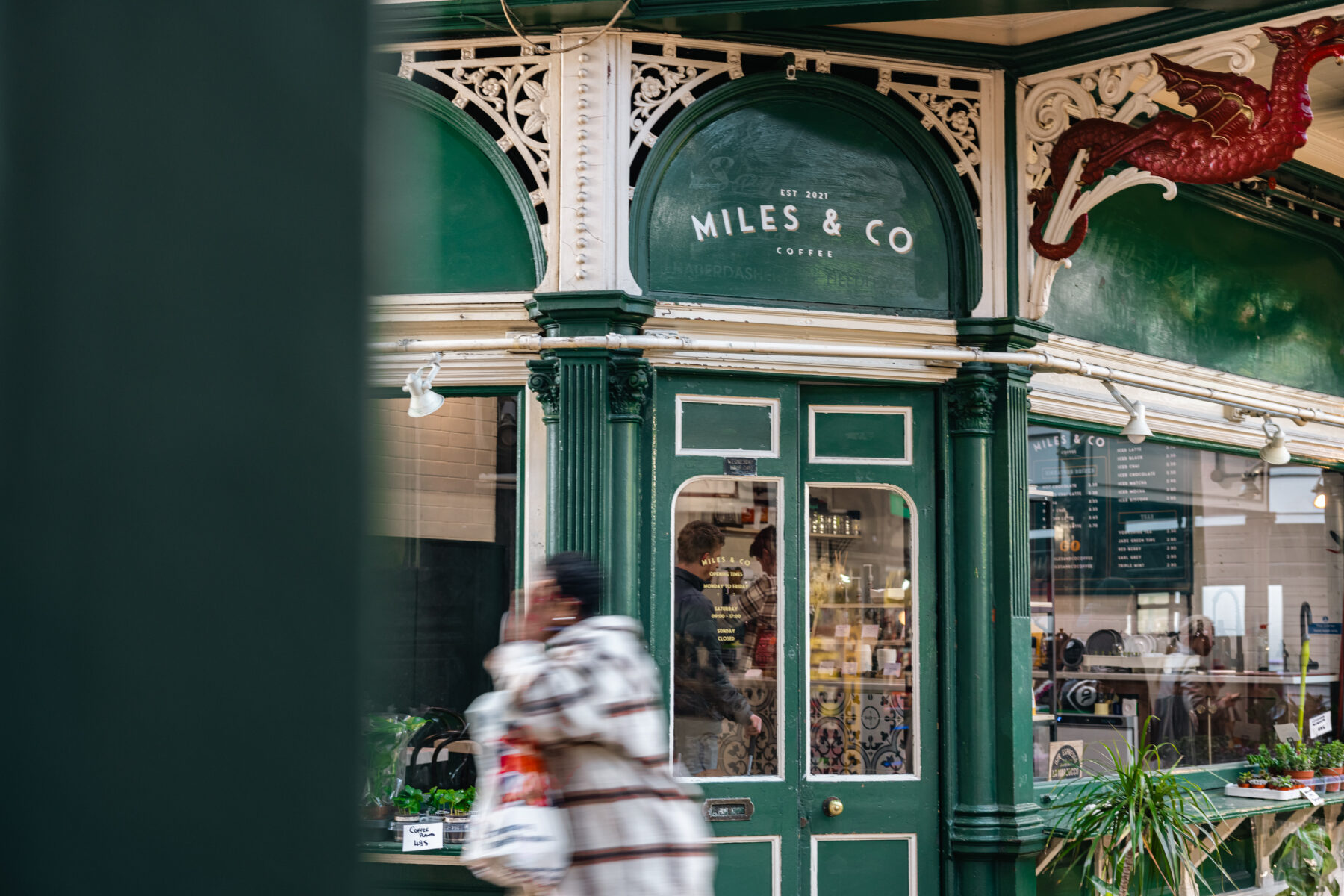 Mile's & Co Coffee
Mile's & Co Coffee
The market today
The upward tangent of the market’s successes continues into today. Whilst the opening of high-end shopping centre Victoria Gate directly across the road was a mixed bag (the loss of the outdoor car park there brought footfall down initially), the market is once again at the centre of Leeds commerce.
Kirkgate contains some unexpected and brilliant retail options, from food to fashion, homewares and jewellery, there’s an incredible range of goodies to keep shopping bags bulging. There is a wealth of options for day-to-day purchases, as well as places to buy gifts or one-off items whilst supporting the local economy.
The market is also becoming renowned for housing some of the best pop-up grub in Leeds. Traders like Vegan street food experts Fat Annie’s, authentic Jamaica Style Creations, Pollini’s Pizza and Eastern Oven, sumptuous veggie Indian aficionados Manjit’s Kitchen and many more – all bring amazing foodie options to the market’s Hall. As well as an independent indie coffee shop Miles & Co Coffee right in front of one of the entrances.
For those interested in cooking, Leeds Cookery School recently opened its doors in one of the newly refurbished blockshops. It is a multi-award-winning social enterprise offering high-quality and experience-focused culinary workshops, courses and events. Whether you’re a beginner or an aspiring chef, their experiences are a great way to socialise, explore new flavours, learn industry techniques and dine out. All profits generated are gifted back to our charity partner Zest, who works to make Leeds a fair city where everyone has the same opportunity. We endeavour to source, eat and dispose of ethically and sustainably.
With more and more shoppers concerned with supporting local businesses and local, traceable, high-quality ingredients, the market is once more in vogue – and long may this star in Leeds’ crown continue to shine.
